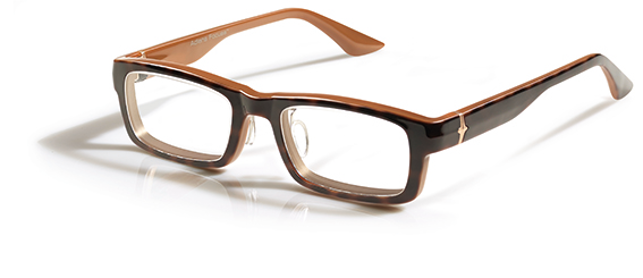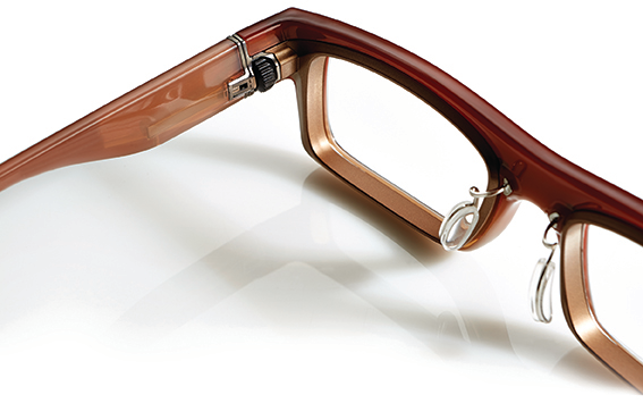
The AdlensFocuss range incorporates an adjustable liquid lens
There are statistics in the modern world that shock. One is that Rwanda, population 10 million plus, covering 26,338 square kilometers, had only 14 eye care professionals in 2005.
The inability to travel to, let alone find an optician and pay for expensive eye care, meant thousands of people are unable to see clearly.
Through a remarkable philanthropic initiative Oxford based Adlens decided to tackle this challenge through the development of the Hemisphere Variable Focus glasses.
Originally designed for the developing world – and nations such as Rwanda where problems are all too common – the Hemisphere glasses were able to correct vision through use of a liquid lens.
A single lens can be adjusted by the user to set the lenses to their desired prescription themselves at any time simply by turning two dials at the sides of the frames, which adjusts the position of the liquid in the lens.
This was in 2005 and the success of the design has seen Adlens grow over the past decade into a global enterprise, leading the development of adjustable focus eyewear for everyone.
The design team now wanted to develop the technology for a more fashionable range of self-focus glasses.
Using a new non-round constraint lens the new AdlensFocuss range would also incorporate distance and reading prescription into one shared lens, while concealing the two adjustment dials neatly on the interior of the frame.
//giphy.com/embed/sipAxer0Lo6Ji
Designing the frame
The frame collection was developed first in Adobe Illustrator around the new lens module.
These sketches were then imported into SolidWorks to enable the first 3D frame surface model to be created.
“A space envelope for the lens module mechanics was defined early on to fit within the frame, maintaining design constraints like minimum wall sections and paying particular attention to the adjuster wheel, temple hinges and frame temple corner,” explains Adlens principal designer Paul Masser.
“These interfaces had to be common across the collection.
Once this was defined the remaining frames in the collection could be modelled to the same constraints.” This wasn’t simply a new design exercise; a whole new manufacturing method had to be developed for the variable power optics.
The use of SolidWorks meant Adlens was able to design all the frame components for the range, as well as all the production equipment needed, including jigs, fixtures and nests.
For this project Masser was new to using SolidWorks, so gained assistance in finding his way around the new software, and developing workarounds to key problems with the assistance of his CAD vendor NTCADCAM.
The set-up allowed for an elite applications engineer come on site to work with the team to help identify issues and boost productivity.
The initial design review was about planning for the future with the aim of expanding into different eye shapes, by having SolidWorks guidance the associated documentation was kept under control thanks to guidance from NT on using the right processes.


Wearers can adjust their vision between distance and reading prescriptions with the discreet dials, now concealed behind the frame arms
Carrying out FEA
Finite Element Analysis (FEA) took into account the amount of handling that would be undertaken to adjust the lenses, with Adlens applying stresses to the frames and lens modules to see how much they deflect and the optical performance of those deflections.
Like-for-like FEA tests using Ansys simulation software and SolidWorks were run, with the latter performing well in comparison while allowing the design team to maintain design changes within the same CAD model.
Physical prototypes were critical to the process, and were used to test and prove different ideas and methods, especially ahead of capital investment in equipment.
3D printing featured heavily, especially in styling the frame collections; so much so that Adlens was able to justify the purchase of its own in-house 3D printer.
The technology was not just used for the actual product, but for the Alpha production line nests, and then in testing for fixtures and rigs.
“Our prototyping was not just limited to 3D printing though,” adds Masser. “I think we used every type [of prototyping technology] at some point during development, including Vacuum Casting, CNC of plastics and metals, wire EDM [electrical discharge machining], Laser and chemical etched metal to DMLS [direct metal laser sintering].”
An Alpha production line proved proof of concept with a Beta line taking the quality to the next level required.
The first pairs of glasses for consumer trials were made available 24 months after the initial proof of concept, a fast outcome for placing such precision engineered optics in the hands of users.
Designing Adlens’ new range of self-focussing eyewear to let everyone see
Default






